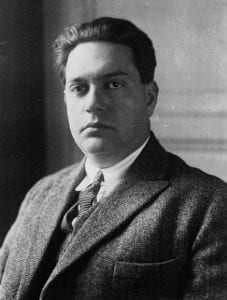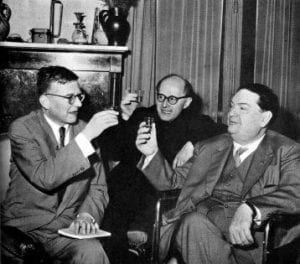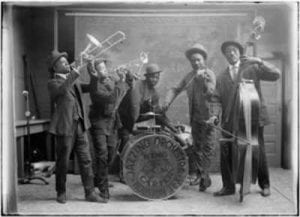Darius Milhaud was a very intriguing composer of his time in Paris during the 1920s. He would later become part of Les Six including famous composers of his era in France such as Poulenc and Honegger. Milhaud utilizes sonorous textures to display his complex music such as his rhythms. His journey to the United States brought back one of his most well-known ballet pieces La Création du monde. But some may ask, how did it all start?
Les Six: The French Composers and their Mentors Jean Cocteau and Eric Satie edited by Robert Shapiro discusses the history of all Les Six members including Milhaud from his youth to death including his involvement with Les Six. Darius Milhaud became an accomplished pianist and violinist early in his youth. Born to a Jewish parentage family, Milhaud was a promising musician by the age of seven. He had begun performing sonatas and symphonic transcriptions alongside his father. Milhaud had a fascination with Debussy especially his piece “Pelléas set Mélisande”. Milhaud soon met Armand Lunel, a writer who would contribute to some of Milhaud’s later works. Milhaud later left to Paris with Lunel enter the prestigious music conservatory known as the Ecole Normale de Musique. He enjoyed the bustling city of Paris, venturing to various recitals and concerts of highly acclaimed composers such as Ravel, Stravinsky, Shostakovich, and Wagner.[1]
Tradition and Styles in the Works of Darius Milhaud by Barbara L. Kelly goes into a more in depth overview of Milhaud’s life, writings and the politics behind 1920’s Paris. Milhaud was Jewish by religion and French by Province and utilized his French nationality more so than his religion to benefit his supporters. He was not liked by all individuals especially when he aided Schöenberg in his premiere of Pierrot Lunaire. Even Vincent d’Indy regarded Jews as individuals who “were only interested in financial, rather than artistic, gain”. Yet, Milhaud believed that it was important to recognize his heritage, even if he did not strongly affiliated with it. In 1923, Milhaud wrote:
“One does not invent a tradition; one receives it and works at it. It depends not only on the musician’s tastes and his inward motivation, on those influences…on the race to which he belongs.”[2]
This heavily influenced the way he composed and he traveled to Brazil and the United States to grasp new musical techniques but still maintaining tradition. He believed that foreign influence would always come and break national tradition regardless of resistance. It was the way musical influence spread. He gives the example of jazz on french music when he writes:
“Already the influence of jazz has passed over like a beneficent storm…” [3]
This describes how Milhaud believed that the influence of Jazz suggested a good influence of finding inspiration from everyday life rather than sticking to traditional french music. This demonstrated Milhaud’s musical maturity as he created complexity in regard to plot, narrative and symbolism to his influential piece La Création du monde (1923).
[1] Ed. Shapiro Robert, Les Six: The French Composers and their Mentors, (Peter Owens Publishers 2011), 187-213.
[2] Kelly Barbara L., Tradition and Style in the Works of Darius Milhaud, (Ashgate Publishing Limited 1988), 27-42
[3] Kelly Barbara L., Tradition and Style in the Works of Darius Milhaud, (Ashgate Publishing Limited 1988), 29



You must be logged in to post a comment.